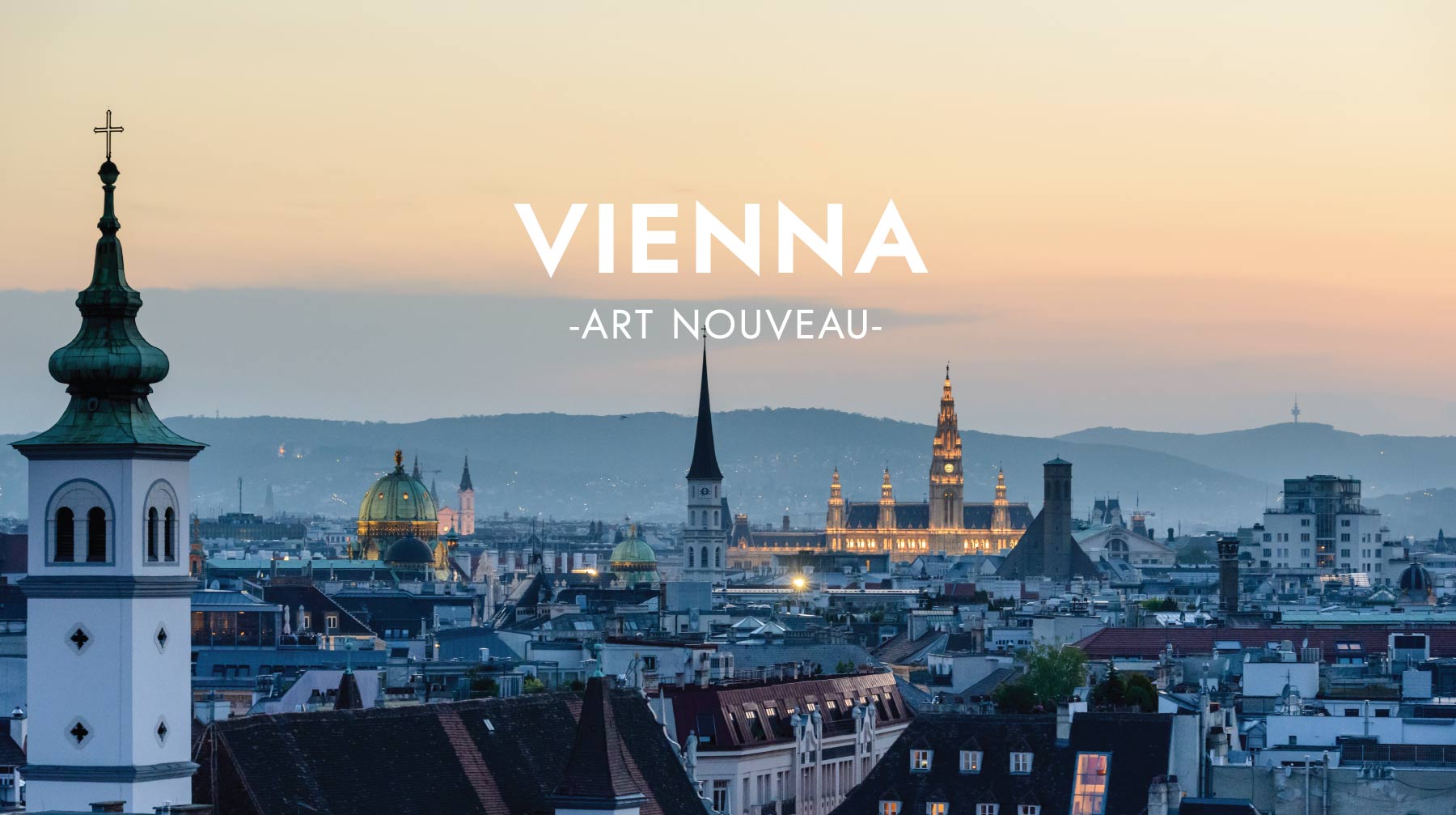
Vienna is well-known for its imperial history and famous composers. But among the celebrities that forged its past, two particularly stand out when it comes to Jugendstil, the German name of the artistic courant known as art nouveau.
You can’t come to Vienna without crossing the path of Gustav Klimt and his paintings in (almost it seems!) every museum in the city and Otto Wagner, the genius architect who did so much to give Vienna the face it has now. The fin-de-siècle era was a very productive one in the capital of the Austro-Hungarian Empire, with the inventive Wiener Werkstätte, the – at that time – scandalous Secession and of the course the wave of this new kind of architecture that swept across all of Europe: art nouveau.
But Otto Wagner was not the only architect to use art nouveau ornaments in his works: Vienna is full of beautiful buildings, from churches to subway stations, from cafés to apartments, where the splendor of art nouveau florishes. Let’s talk a walk to discover the most famous among them!
Edited by Marie Marquez & illustrated by Alejandro Castillo.
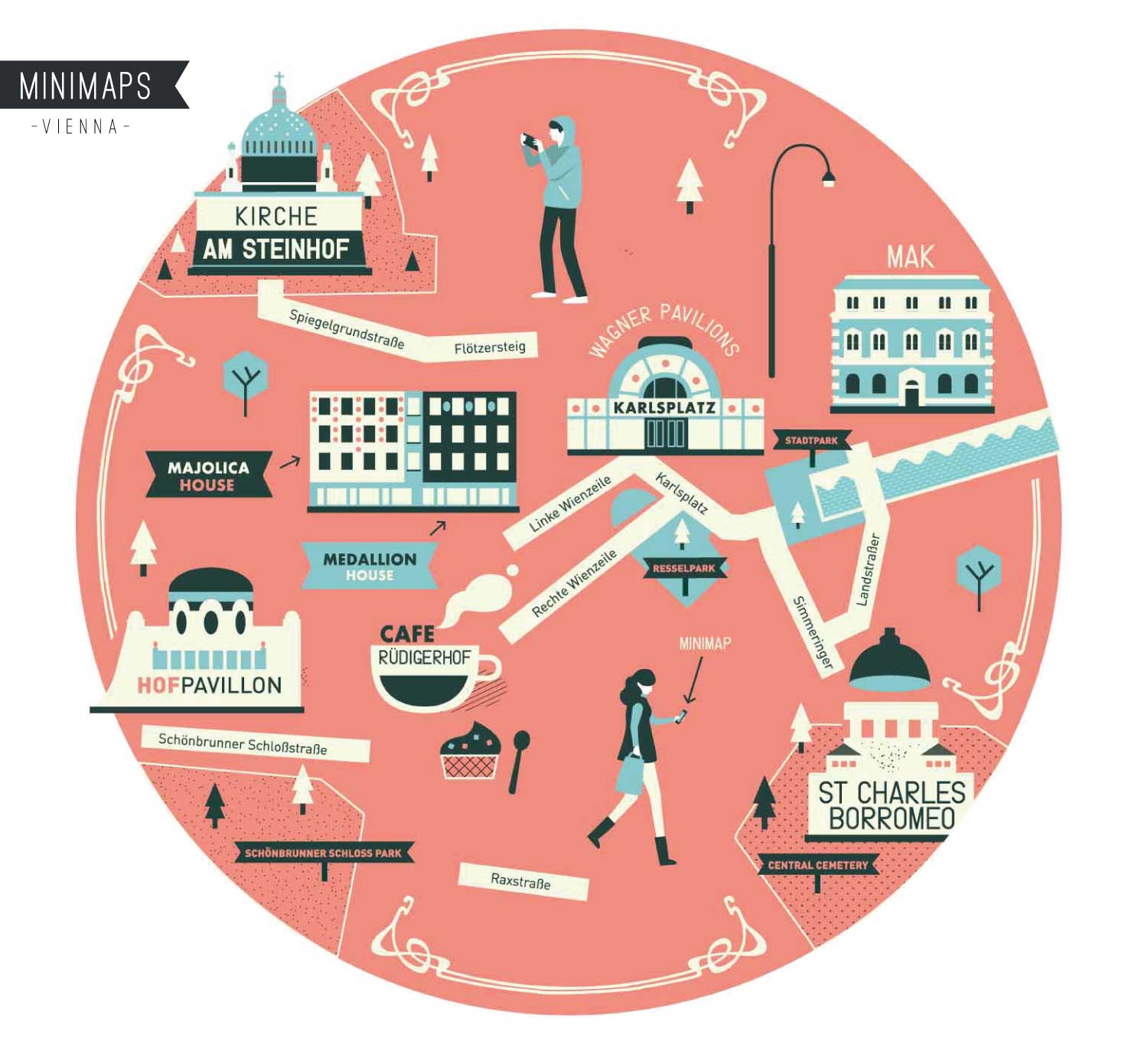
Free to download, ready to print!
1. Majolica House and Medallion House
The two houses near the Naschmarkt, one of the bigger and most famous market in Vienna, are without a doubt the masterpieces of architect Otto Wagner. The facades, one with delicate rose flowers pattern and the other with shiny gold medallions, really stand out in a neighborhood of more typical, and classical Viennese buildings. Take your time to admire all the tiny details all over the tiles, top to bottom, from the lion heads on one side to the screaming women on the other. And if you have the chance, do go inside as the interior is as magnificent as the outside! Indeed the perfect place to start an art nouveau journey in Vienna!
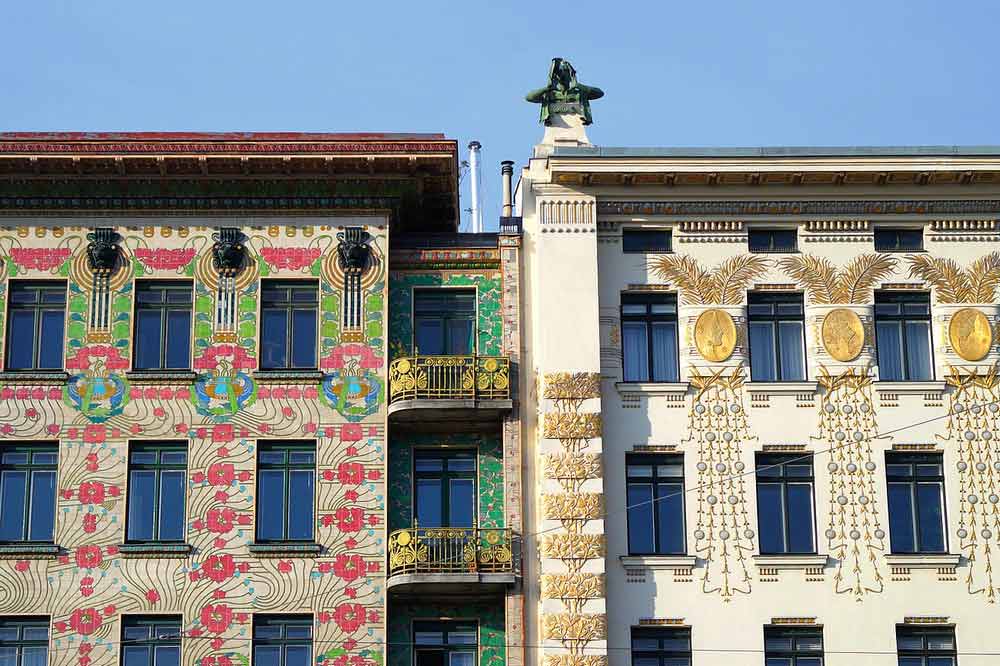
2. Wagner Pavilions (Karlsplatz)
Otto Wagner was a famous Viennese architect who was in charge of designing the Stadtbahn lines (ie subway, at that time a mostly aerial one), around 1900 (its heritage is still visible today, along the U4 and U6 lines and their white and green stations). On Karlsplatz, he designed two pavilions facing each other, very different from the other stations: a steel framework, marble slabs painted with black and gold sunflowers. After nearly being destroyed when the Stadtbahn was converted to U-Bahn (underground subway), the left pavilion now hosts an exhibition space focusing on the work of Otto Wagner: it’s the perfect place to learn more about the various projects the architect worked on. As for the right pavilion, it is used as a café and you can still see some of the original decor inside, although not in very good condition.
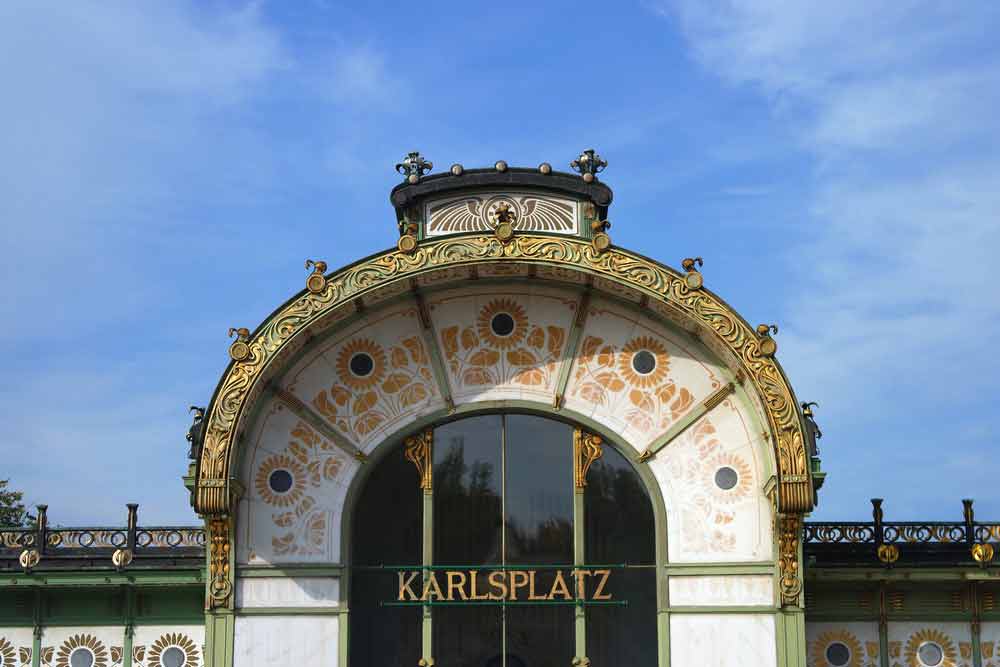
3. Hofpavilion Wagner (Hietzing)
After paying a visit to Schönbrunn, don’t miss the stunning Hofpavilion (Court Pavilion) near the U-Bahn station Hietzing, designed by Otto Wagner for the use of Franz-Joseph, the Habsbourg emperor, and his family and entourage. The emperor only used twice the station, but it was secondary to Wagner: the important thing was that the emperor had validated the project and thus the modernist architecture. Despite all his efforts, the pavilion was the only imperial work Otto Wagner has ever done. Nowadays it hosts a comprehensive exhibition on the Stadtbahn, the metropolitan railway built by Otto Wagner around 1900, and how it shaped the face of Vienna, even to this day.
4. Kirche am Steinhof
If there was only one Jugendstil church to visit in Vienna, maybe in the entire world, it would definitely be this one! The Kirche am Steinhof (also known as the Church of St. Leopold) is located on the grounds of the Steinhof Psychiatric Hospital in the 14th district. It’s a little far from the city center but the ride is totally worth it! The outside as well as the inside is nowhere like a traditional church: from its shape to its decor (white and gold everywhere), it truly is a pure wonder for the eye. Pay attention to the details as Wagner was a perfectionist: for example, you’ll easily notice the lack of sharp edges, everything seems really smooth: perfectly normal for a church built as a part of an asylum!
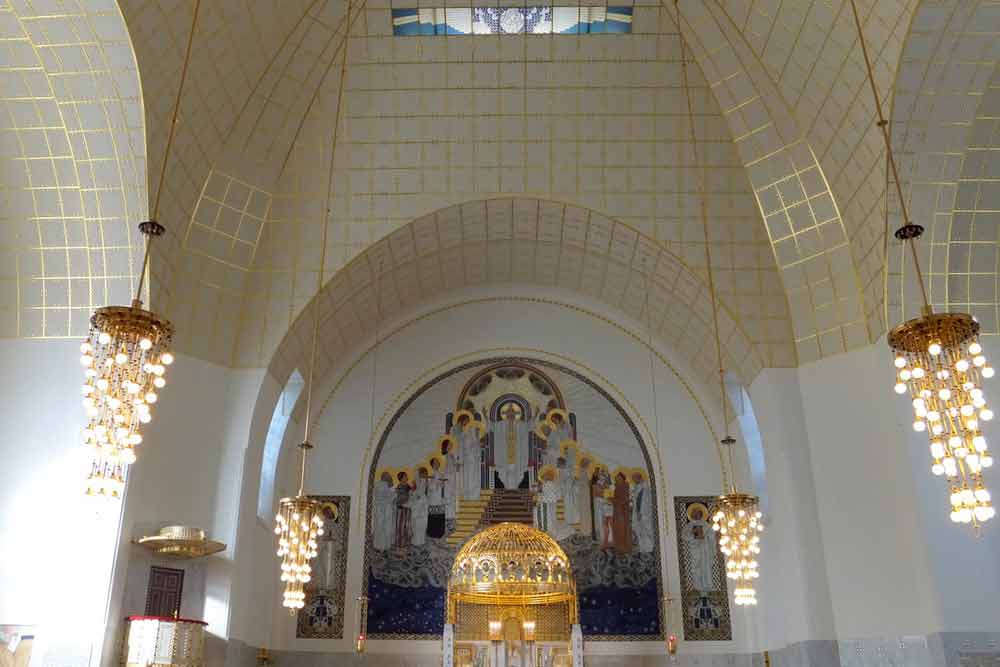
5. St. Charles Borromeo Cemetery Church
The Central Cemetery of Vienna is one of the largest cemetery in the entire world, with three million deceased buried here. When you enter the cemetery by the main gate (number two), you face an imposing church, the St. Charles Borromeo Cemetery Church, built by Max Hegele in the art nouveau style. The church is part of a bigger ensemble, with two pillars around the main gate and the two crematoria. The interior traced back to its construction with beautiful decor: mosaics, paintings, candlesticks… Don’t forget to look up at the cupola! After your visit, don’t forget to wander along the alleys of the cemetery as you will for sure encounter some art nouveau tombs as well.
6. MAK
If it’s too cold outside and you’re sick of twisting your neck to admire some art nouveau details far off a building, then let’s warm up inside one of the numerous museums displaying Art Nouveau stuff. And my favorite is indubitably the MAK, the museum of applied arts at the border of the city center. It showcases a special exhibition called « Vienna 1900 » with some of the most illustrious designers, from Austria (Koloman Moser and Maria Joseph Olbrich) and all of Europe (you will find for example some furniture designed by Charles Rennie Mackintosh, the Scottish architect). Cherry on the cake, it displays the preliminary work of the famous Stoclet friez from Gustav Klimt (the original is in the Stoclet house in Brussels which is not open to the public, alas). Many times, throughout the year, there are also temporary exhibitions focusing on the Wiener Werkstätte.
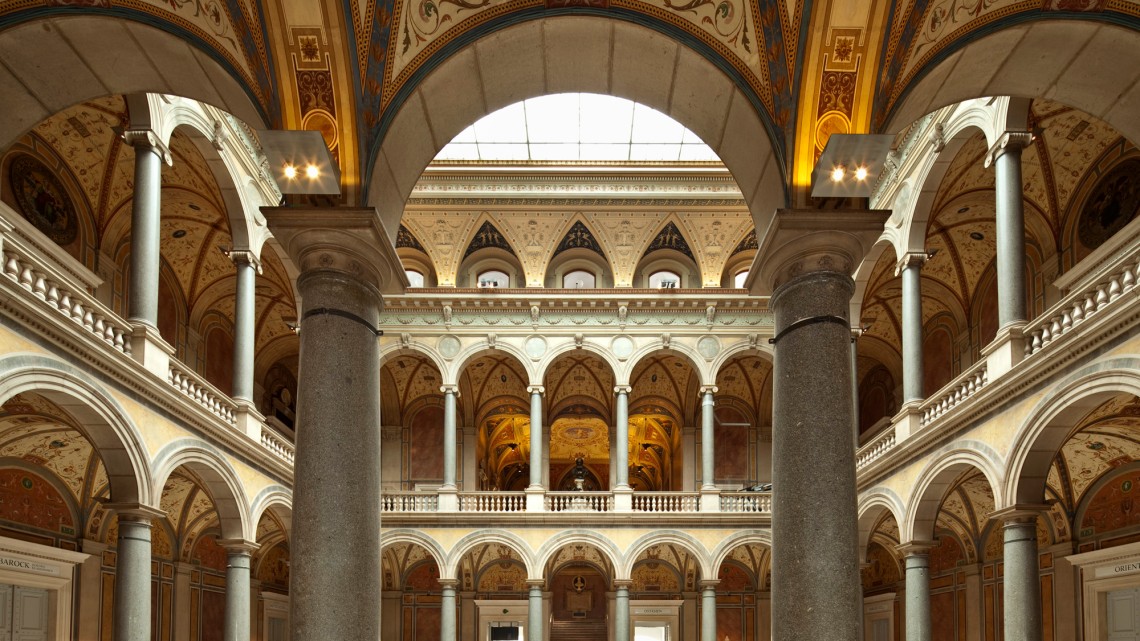
7. Café Rudigerhof
Lastly, why not combine your interest in art nouveau with one of the prime Viennese tradition: the cafés! Not far from the Majolica House (and the circle is complete) you will find the Café Rudigerhof, in the beautiful Rudigerhof building designed by architect Oskar Marmorek. Its Art Nouveau features are less grandiose that the one you will certainly have previously encounter but it deserves nonetheless that you pay it a visit. Its interior is untouched from the 50’s and the 60’s but you will have to hold your breath to admire it because the café is one of the few in Vienna where smoking is still allowed everywhere inside. During the summer days, it’s best to just enjoy drinking your beverage on the terrace under the trees and at times look up between the branches and leaves to spot the delicate gold details of the facade.
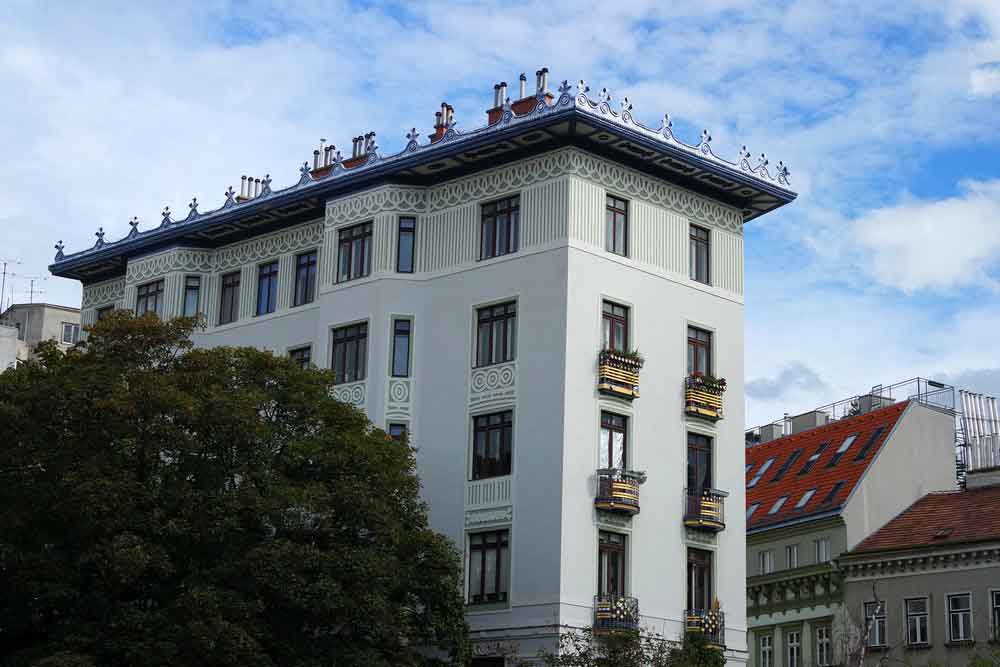
Ready for a beautiful walk around Vienna?
Download your minimap here!
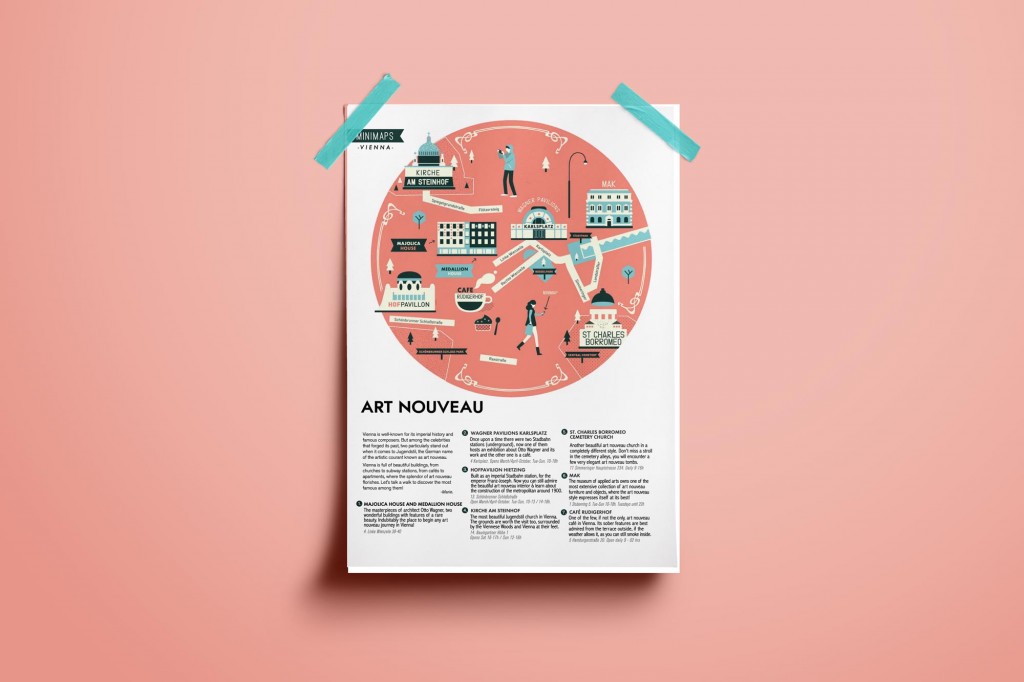
To share your photos with other minimappers, please use this hashtag #superminimaps on Bluesky and Instagram!
♥



